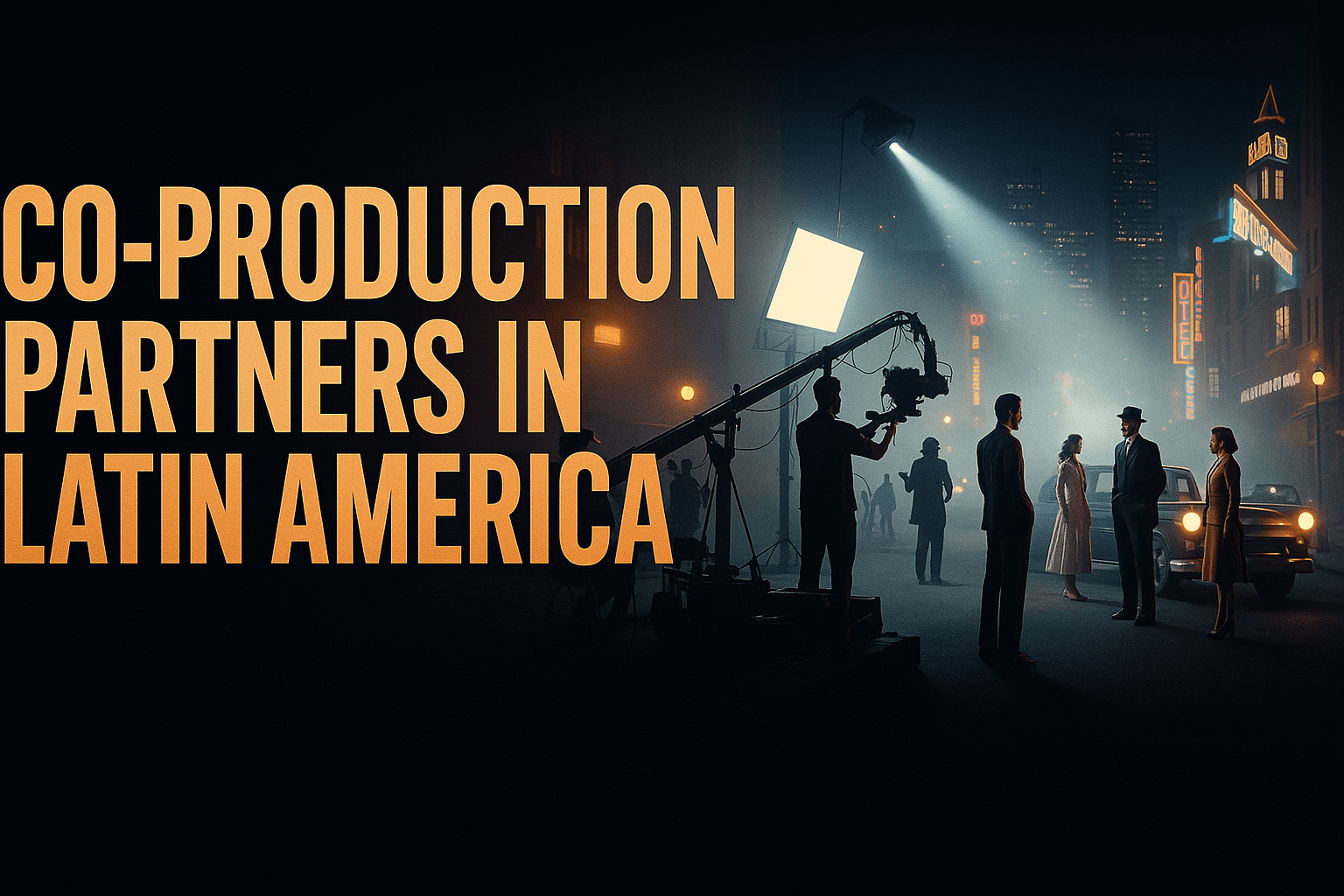Introduction
Let’s be honest. Getting a film or TV show made is tough. Getting it financed? Even tougher. You’ve got a killer script and a vision, but the budget just isn’t there. Sound familiar? This is where finding co-production opportunities in Europe can be a total game-changer.
But navigating the maze of treaties, funds, and incentives across dozens of countries can feel overwhelming. Where do you even start? You could spend months researching, networking, and still come up empty-handed.
It doesn’t have to be that hard.
In this post, I’m going to break down exactly how to find and secure co-production opportunities in Europe.
We’ll cut through the jargon and give you a clear, actionable roadmap to get your project financed and into production.
Key Takeaways
| Understand the Framework | Focus on the European Convention and key bilateral treaties. These are your entry tickets. |
| Follow the Money | Leverage major funds like Eurimages and Creative Europe MEDIA for financing. |
| Target Key Countries | Prioritize countries with strong incentives and track records, like France, Germany, and Italy. |
| Find the Right Partner | Your partner is everything. Use data-driven platforms to vet and connect with credible producers. |
Want to know who is funding projects right now?

Step 1: Understand the Co-Production Frameworks
Before you start emailing producers in Paris or Berlin, you need to understand the rules of the game. European co-productions aren’t just casual partnerships; they are governed by official agreements. Mess this up, and you’ll get zero funding.
There are two main types you need to know:
The European Convention on Cinematographic Co-production
This is the big one. It’s a multilateral treaty that sets the ground rules for co-productions between its 40+ member states. Think of it as the master key that unlocks the entire continent.
- Who it’s for: Producers in any of the member countries (including non-EU members like the UK, Canada, and Australia).
- Key Requirement: The minority co-producer’s contribution must be between 10% and 70% for multilateral productions. For bilateral, it’s typically 20% to 80%.
- The Payoff: An approved project is treated as a “national” film in each participating country, giving you access to local funding and incentives. It’s huge.
Bilateral Treaties
These are one-on-one agreements between two specific countries. For example, France and Canada have a very strong treaty that has launched thousands of projects. These agreements often have more specific financial and cultural requirements.
Your action item: Check which bilateral treaties your country has with European nations. This is your primary hunting ground for partners.
Step 2: Tap into Europe’s Major Film Funds
Treaties open the door, but the funding bodies write the checks. Two pan-European funds are absolutely critical for any producer looking to co-produce in the region.
Eurimages
Eurimages is the cultural support fund of the Council of Europe. It’s the holy grail for European co-productions.
- What it funds: Feature films, animations, and documentaries intended for cinema release.
- How it works: It provides financial support as a conditionally repayable loan, typically up to 17% of the budget (capped at €500,000).
- The Catch: Your project must be a co-production between at least two member states. The lead producer can’t hold more than 70% of the budget.
Creative Europe MEDIA Programme
This is the European Union’s program to support the cultural and creative sectors. It’s less about direct production funding and more about development and distribution.
- What it’s for: Securing development funding for single projects or slates, and getting support for distribution across Europe.
- Why it matters: Getting a MEDIA grant is a massive stamp of approval that makes it easier to attract other financiers and partners. It shows your project has European appeal.
Don’t ignore these funds. They are competitive, but a successful application can be the cornerstone of your entire financing plan.
Step 3: Spotlight on Top Co-Production Countries
Not all countries are created equal when it comes to co-production. Some offer incredible tax incentives, deep talent pools, and experienced producers. Where should you focus your energy?
Here’s a quick breakdown of the heavy hitters.
| Country | Key Incentive | Why It’s a Hotspot |
|---|---|---|
| France | Tax Rebate for International Production (TRIP) – 30% | Massive domestic market, strong state support via the CNC, and a deep-rooted co-production culture. French partners are highly sought after. |
| Germany | German Federal Film Fund (DFFF) – up to 25% | Europe’s largest economy with a network of powerful regional funds. Very reliable and efficient production infrastructure. |
| Italy | Tax Credit – up to 40% | Offers one of the most generous tax credits in Europe. A rich history of international co-productions and stunning locations. |
| United Kingdom | Film Tax Relief (FTR) – up to 25.5% | Despite Brexit, the UK remains a powerhouse through its bilateral treaties. World-class crews, studios, and post-production facilities. |
Your strategy should be to find a partner in a country whose incentives and culture align with your project’s needs. Don’t just chase the biggest rebate; find the right fit.
Ready to get your next project greenlit?

Step 4: The Secret to Finding the Right Partner
You can understand every treaty and fund, but without the right partner, your project is dead in the water. So how do you find them?
The old way was to spend a fortune flying to markets like Cannes, Berlin, and TIFF, hoping to bump into the right person. It’s expensive, time-consuming, and based on luck.
The new way is to use data.
You need to identify production companies that have a proven track record in co-productions similar to yours—in genre, budget, and scale. You need to know who they’ve worked with before, what projects they’ve successfully financed, and who the key decision-makers are.
Trying to piece this together with scattered Google searches and outdated industry lists is a recipe for failure.
How Vitrina Streamlines Your Search
This is exactly why we built Vitrina. Our platform isn’t just another directory. It’s a dynamic, global marketplace that connects you with vetted partners. We help you cut through the noise by giving you access to real-time data on thousands of production companies, their projects, and their deal-making history. Instead of guessing, you can use the Vitrina solution to identify the perfect European co-producer for your film or TV show in minutes, not months. You can even track upcoming projects with our Project Tracker to see who is actively looking for partners right now.
Conclusion
Finding co-production opportunities in Europe is a massive lever to get your project off the ground. It’s not just about the money; it’s about expanding your creative pool, reaching new audiences, and building international partnerships that can last a career.
We’ve covered the frameworks, the key funds, the top countries, and the importance of finding the right partner. The old, slow method of searching is over. The smart, data-driven approach is here.
What’s the first strategy you’re going to try? Let me know in the comments.
Ready to stop searching and start connecting? The European partners you’re looking for are on Vitrina. Sign up today and get direct access to a world of co-production opportunities. Your next project is waiting.Find Your European Co-Producer on Vitrina Now
Frequently Asked Questions
It varies, but a common benchmark set by the European Convention is 10% for multilateral co-productions and 20% for bilateral ones. However, always check the specific treaty you are using, as requirements can differ.
Yes, absolutely. You will need a signed co-production agreement or at least a detailed deal memo outlining the creative and financial contributions of each partner, the recoupment schedule, and territory rights. They need to see that it’s a real, structured partnership.
Yes. The UK is still a member of the European Convention on Cinematographic Co-production and maintains numerous bilateral treaties with European countries. UK producers can and do continue to successfully co-produce with European partners.
Look at their track record. Have they successfully completed co-productions before? Who were their partners? What is their reputation in the market? Using a data platform like Vitrina allows you to see this history clearly, vetting potential partners based on past performance, not just promises.



























































